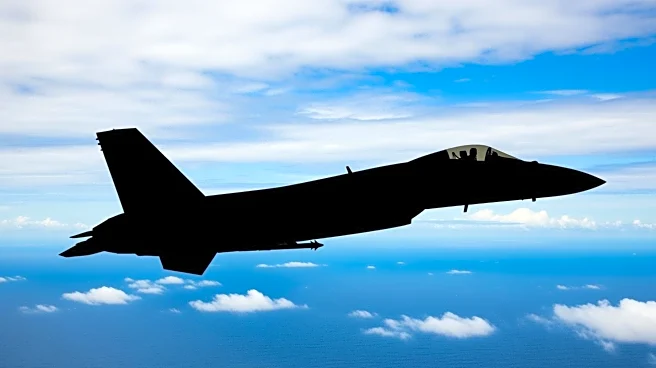What's Happening?
Recent satellite imagery has revealed a barrier placed by China at the entrance of a contested fishing area in the South China Sea, known as Scarborough Shoal. This area lies within the Philippines' exclusive economic zone, granting it exclusive fishing rights
under international maritime law. Despite a 2016 ruling by an international tribunal in The Hague rejecting China's sovereignty claims over the shoal, China has continued to assert control, leading to confrontations with Philippine forces. The barrier was discovered during a Philippine navy patrol, and similar barriers have been placed and removed in the past. Tensions have been heightened by recent incidents, including a collision between Chinese and Philippine vessels.
Why It's Important?
The installation of the barrier by China in the South China Sea is significant as it challenges the Philippines' territorial rights and raises concerns about regional security. The area is strategically important, and China's actions could lead to increased military presence and potential conflict. The situation underscores the importance of the Mutual Defense Treaty between the Philippines and the United States, which could be invoked if hostilities escalate. The ongoing disputes in the South China Sea have broader implications for international maritime law and regional stability, affecting trade routes and geopolitical alliances.
What's Next?
China is expected to continue expanding its presence in the South China Sea, while the Philippines is unlikely to concede territory. The Philippines has urged China to respect its sovereignty and comply with international law. The situation may lead to increased diplomatic efforts and potential involvement from the United States, given its defense commitments to the Philippines. The international community may also respond to uphold maritime law and prevent further escalation.
Beyond the Headlines
The barrier installation highlights the complex geopolitical dynamics in the South China Sea, where multiple countries have overlapping claims. China's actions reflect its broader strategy of asserting control over disputed territories through 'gray zone' tactics, which involve coercive measures that fall short of open conflict. This approach challenges international norms and tests the resolve of other nations to uphold legal rulings and maintain regional peace.














